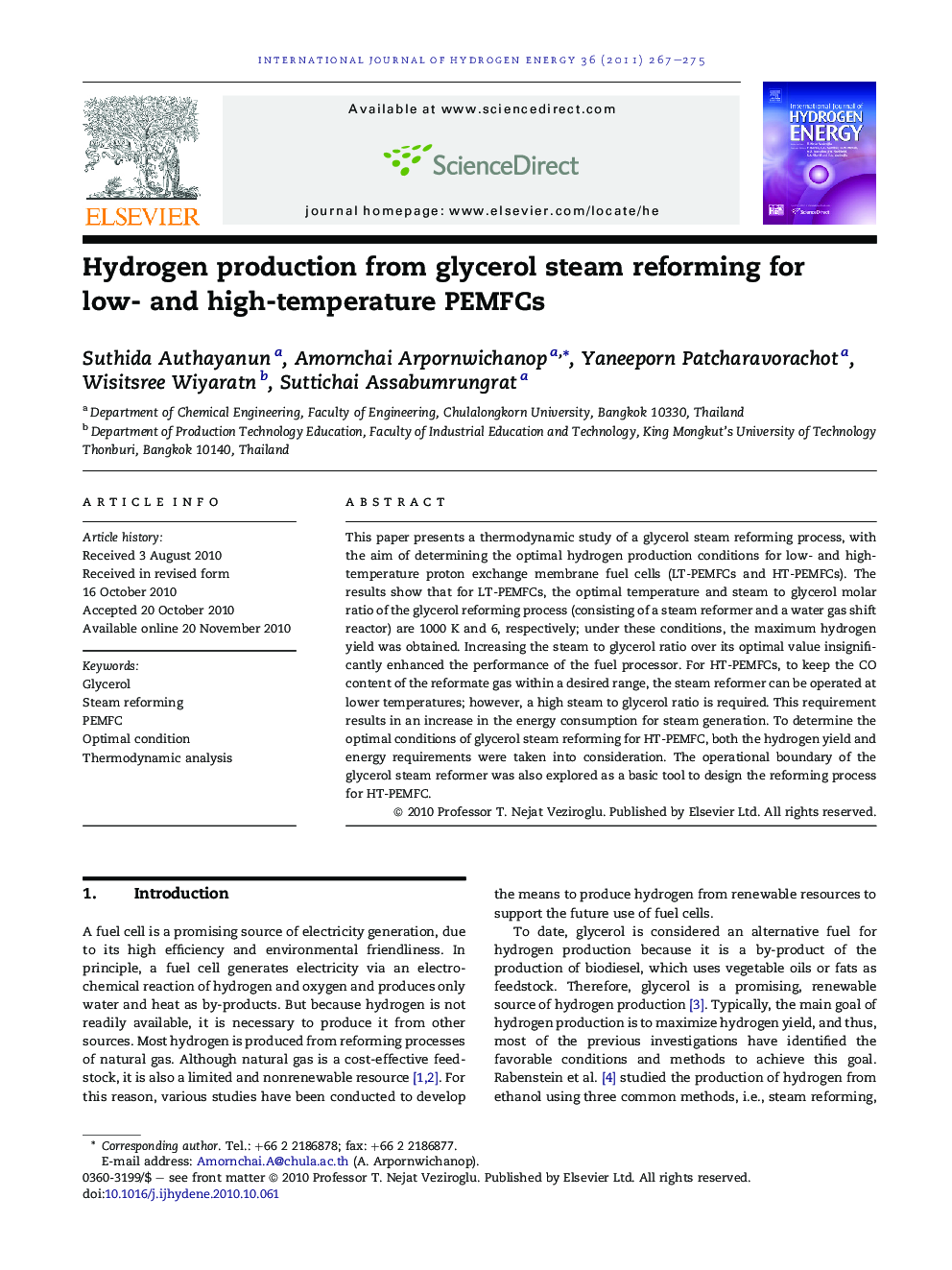| Article ID | Journal | Published Year | Pages | File Type |
|---|---|---|---|---|
| 1277775 | International Journal of Hydrogen Energy | 2011 | 9 Pages |
This paper presents a thermodynamic study of a glycerol steam reforming process, with the aim of determining the optimal hydrogen production conditions for low- and high-temperature proton exchange membrane fuel cells (LT-PEMFCs and HT-PEMFCs). The results show that for LT-PEMFCs, the optimal temperature and steam to glycerol molar ratio of the glycerol reforming process (consisting of a steam reformer and a water gas shift reactor) are 1000 K and 6, respectively; under these conditions, the maximum hydrogen yield was obtained. Increasing the steam to glycerol ratio over its optimal value insignificantly enhanced the performance of the fuel processor. For HT-PEMFCs, to keep the CO content of the reformate gas within a desired range, the steam reformer can be operated at lower temperatures; however, a high steam to glycerol ratio is required. This requirement results in an increase in the energy consumption for steam generation. To determine the optimal conditions of glycerol steam reforming for HT-PEMFC, both the hydrogen yield and energy requirements were taken into consideration. The operational boundary of the glycerol steam reformer was also explored as a basic tool to design the reforming process for HT-PEMFC.
